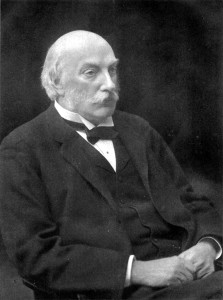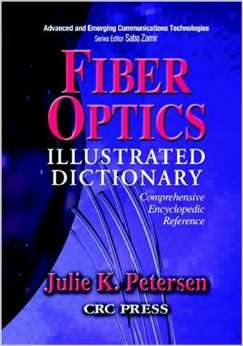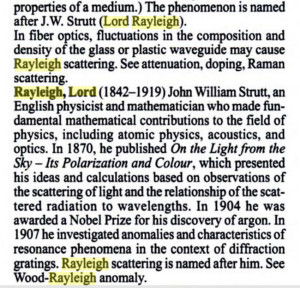The Legacy of Lord Rayleigh
John William Strutt, 3rd Baron Rayleigh
 John William Strutt, 3rd Baron Rayleigh, OM, PRS (/ˈreɪli/; 12 November 1842 – 30 June 1919) was an English physicist who, with William Ramsay, discovered argon, an achievement for which he earned the Nobel Prize for Physics in 1904. He also discovered the phenomenon now called Rayleigh scattering, which can be used to explain why the sky is blue, and predicted the existence of the surface waves now known as Rayleigh waves. Rayleigh’s textbook, The Theory of Sound, is still referred to by acoustic engineers today.
John William Strutt, 3rd Baron Rayleigh, OM, PRS (/ˈreɪli/; 12 November 1842 – 30 June 1919) was an English physicist who, with William Ramsay, discovered argon, an achievement for which he earned the Nobel Prize for Physics in 1904. He also discovered the phenomenon now called Rayleigh scattering, which can be used to explain why the sky is blue, and predicted the existence of the surface waves now known as Rayleigh waves. Rayleigh’s textbook, The Theory of Sound, is still referred to by acoustic engineers today.
Biography
John William Strutt, of Terling Place Essex, suffered from frailty and poor health in his early years.[1] He attended Harrow School, before going on to the University of Cambridge in 1861 where he studied mathematics at Trinity College. He obtained a Bachelor of Arts degree (Senior Wrangler and 1st Smith’s prize) in 1865, and a Master of Arts in 1868.[2] He was subsequently elected to a Fellowship of Trinity. He held the post until his marriage to Evelyn Balfour, daughter of James Maitland Balfour, in 1871. He had three sons with her.[3] In 1873, on the death of his father, John Strutt, 2nd Baron Rayleigh, he inherited the Barony of Rayleigh.
He was the second Cavendish Professor of Physics at the University of Cambridge (following James Clerk Maxwell), from 1879 to 1884. He first described dynamic soaring by seabirds in 1883, in the British journal Nature. From 1887 to 1905 he was Professor of Natural Philosophy at Cambridge.
Around the year 1900 Lord Rayleigh developed the duplex (combination of two) theory of human sound localization using two binaural cues, interaural phase difference (IPD) and interaural level difference (ILD) (based on analysis of a spherical head with no external pinnae). The theory posits that we use two primary cues for sound lateralization, using the difference in the phases of sinusoidal components of the sound and the difference in amplitude (level) between the two ears.
In 1919, Rayleigh served as President of the Society for Psychical Research.[4]
The rayl unit of acoustic impedance is named after him.
As an advocate that simplicity and theory be part of the scientific method, Lord Rayleigh argued for the principle of similitude.
Lord Rayleigh was elected Fellow of the Royal Society on 12 June 1873, and served as president of the Royal Society from 1905 to 1908. From time to time Lord Rayleigh participated in the House of Lords; however, he spoke up only if politics attempted to become involved in science. He died on 30 June 1919, in Witham, Essex.[3] He was succeeded, as the 4th Lord Rayleigh, by his son Robert John Strutt, another well-known physicist.
Religious views[edit]
Lord Rayleigh was an Anglican. Though he did not write about the relationship of science and religion, he retained a personal interest in spiritual matters.[5] When his scientific papers were to be published in a collection by the Cambridge University Press, Strutt wanted to include a religious quotation from The Bible, but he was discouraged from doing so, as he later reported:
“When I was bringing out my Scientific Papers I proposed a motto from the Psalms, “The Works of the Lord are great, sought out of all them that have pleasure therein.” The Secretary to the Press suggested with many apologies that the reader might suppose that I was the Lord.” [6][7]
Still, he kept his wish and the quotation was printed in the five-volume collection of scientific papers.[8]
In a letter to a family member, he also wrote about his rejection of materialism and spoke of Jesus Christ as a moral teacher:
“I have never thought the materialist view possible, and I look to a power beyond what we see, and to a life in which we may at least hope to take part. What is more, I think that Christ and indeed other spiritually gifted men see further and truer than I do, and I wish to follow them as far as I can.” Rayleigh (1910)[9][10][11]
Honours and awards[edit]
Craters on Mars and the Moon are named in his honour as well as a type of surface wave known as a Rayleigh wave. The asteroid 22740 Rayleigh was named in his honour on 1 June 2007.[12] The rayl, a unit of acoustic impedance, is named for him.
Smith’s Prize (1864)
Royal Medal (1882)
Matteucci Medal (1894)
Member of the Royal Swedish Academy of Sciences (1897)
Copley Medal (1899)
Order of Merit (1902)
Nobel Prize for Physics (1904)
Elliott Cresson Medal (1913)
Rumford Medal (1914)
“John William Strutt“. Licensed under Public Domain via Wikimedia Commons.
Original article:
http://en.wikipedia.org/wiki/John_William_Strutt,_3rd_Baron_Rayleigh
Lord Rayleigh, John William Strutt – Obstetric ultrasound
Lord Rayleigh was born John William Strutt into a barony begun in 1821 on the occasion of King George IV’s coronation. He was the eldest of seven children, born on the 12th November 1842. His father, John James Strutt, had been Second Baron for only six years, during which time he had married Clara Latouche Vicars, a lady over twenty five years his junior.
His inquisitive scientific mind showed itself when he was four (despite the fact that he had seemed rather unintelligent when he was unable to speak at the age of almost three). His aunt Emily complained at his constant questioning, such as: “What becomes of the water spilt on the tablecloth after it has dried up?”
He attended Eton College at ten years of age, only to catch smallpox, and then whooping cough. His parents decided a home education would be best, and so a private tutor educated him in mathematics, trigonometry and statics. His short stay at Harrow (West Acre, 18571 – 18572) was his last at school, as he caught a chest infection which left him in ill health for the rest of his life.
He was taught from the ages of fourteen to eighteen by Rev. G.T. Warner at Torquay. He entered Trinity College, Cambridge in October 1861 having passed his entrance exams with great success. His mathematics course was vital to his future career in understanding physics. He graduated in 1865 with awards which displayed his promise, a promise which he amply fulfilled. He gained a fellowship at the college the following year, which he held for five years before he married. In 1873 his father died, so he became Third Baron Rayleigh and inherited Terling Place, Essex, as well. For the next three years he felt compelled to look after the estate so his scientific research was little. In 1876, he left the job to his younger brother.
He spent five years as the second Cavendish Professor of Physics at Cambridge. He first researched optics and vibrations, both rather mathematical topics. Later he considered physics as a field of work in itself and investigated wave theory, light scattering, electrodynamics, hydrodynamics, viscosity and photography. His careful, precise work led to the establishment of standards for resistance, current and electromotive force. Lord Rayleigh was the cause of a radical new way of instruction of physics experiments at Cambridge, increasing his students from six to seventy. After Cambridge, Rayleigh returned to his country seat. For much of his career he divided his time between his laboratory at Terling Place and the Royal Institution in London where he was Professor of Natural Philosophy from 1887 to 1905. The experiments for the isolation of argon, for instance, were first carried out at the Royal Institution, but the final production was made at Terling Place.
Lord Rayleigh’s first researches were mainly mathematical, concerning optics and vibrating systems, but his later work ranged over almost the whole field of physics, covering sound, wave theory, colour vision, electrodynamics, electromagnetism, light scattering, flow of liquids, hydrodynamics, density of gases, viscosity, capillarity, elasticity, and photography. His patient and delicate experiments led to the establishment of the standards of resistance, current, and electromotive force; and his later work was concentrated on electric and magnetic problems. Lord Rayleigh was an excellent instructor and, under his active supervision, a system of practical instruction in experimental physics was devised at Cambridge, developing from a class of five or six students to an advanced school of some seventy experimental physicists. His Theory of Sound was published in two volumes during 1877-1878. Volume I covers harmonic vibrations, systems with one degree of freedom, vibrating systems in general, transverse vibrations of strings, longitudinal and torsional vibrations of bars, vibrations of membranes and plates, curved shells and plates, and electrical vibrations. Volume II covers aerial vibrations, vibrations in tubes, reflection and refraction – of plane waves, general equations, theory of resonators, Laplace’s functions and acoustics, spherical sheets of air, vibration of solid bodies, and facts and theories of audition. His other extensive studies are reported in his Scientific Papers – six volumes issued during 1889-1920. He has also contributed to the Encyclopaedia Britannica.
The honours he received for his work were numerous. He was made a Fellow of the Royal Society in 1873, was Secretary between 1885 and 1896, and President between 1905 and 1908. He was made a Privy Counsellor in 1905. The Royal Society awarded him the Copley, Royal and Rumford medals for his work in Physics. All of this was overshadowed by his being awarded the Nobel Prize for Physics in 1904 for the isolation of the inert gas argon. He is the only Old Harrovian to achieve this award.
Rayleigh had three sons, the eldest of whom, Robert John Strutt, succeeded him at his death on 30th June, 1919. The name of Rayleigh in science continued through the Fourth Baron who became Professor of Physics at Imperial College of Science and Technology, London. However, the work of his father is far more famous and few physicists, and no Old Harrovians, have had quite as dramatic and lasting effect on the world of science.
Original article:
http://www.ob-ultrasound.net/rayleigh.html
Lord Rayleigh (John William Strutt) – Molecular Expressions
Lord Rayleigh was a British physicist and mathematician who worked in many disciplines including electromagnetics, physical optics, and sound wave theory. The criteria he defined still act as the limits of resolution of a diffraction-limited optical instrument. Rayleigh wrote over 446 scientific papers, but is perhaps best known for his discovery of the inert gas argon, which earned him a Nobel Prize.
Born John William Strutt, Rayleigh inherited his title when his father died in 1873. Although he was to become the third Baron of Rayleigh, as a young child he was slow to show eminence. He was the eldest of seven children and was almost three years old before he began speaking. Rayleigh’s childhood and early education at Eton and Harrow were frequently disrupted by poor health. Hailing from a long line of landowners, Rayleigh was not raised in a scientific family and his predilection for the field was unexpected.
At Cambridge University, however, Rayleigh exhibited strong promise in mathematics and an avocation for photography. He became the top member of his class under the tutelage of Edward Routh, a famous applied mathematician, and then a fellow at Trinity College in 1866. During his undergraduate years, Rayleigh was heavily influenced and inspired by George Stokes, who was a Lucasian professor of mathematics. After graduation, Rayleigh married the sister of the future Prime Minister, Lord Arthur Balfour, and together they had three sons, the eldest of which would eventually follow his father’s scientific path.
Due to his privileged background, Rayleigh’s hard work was a choice rather than a necessity. Yet, he was a natural history professor at the Royal Institution of Great Britain, a Justice of the Peace, Chancellor of Cambridge University, and recipient of many honorary science and law degrees. A fellow of the Royal Society of London, Rayleigh achieved the Royal, Copley, and Rumford Medals and eventually served as president of the organization. In the London Mathematical Society, Rayleigh was also president, from 1878 to 1880, and a De Morgan Medal recipient in 1890. Many physics laws and constants bear his name, as do craters on the moon and Mars. Rayleigh’s greatest honor, however, was the Nobel Prize in Physics awarded to him in 1904.
Various scientific achievements earned Rayleigh his renowned reputation. Soon after his marriage, an attack of rheumatic fever almost cost Rayleigh his life. It was on a recuperative trip to Egypt that he began his great work on the theory of sound. The first volume was released in 1877 and a second in 1878. Their discussion of vibration, resonance, and acoustics remains one of the principal accomplishments in the field. Another early undertaking was a mathematical explanation for the light scattering that gives the sky its blue appearance. The Rayleigh Scattering law evolved from this theory and has since become a landmark in the study of wave propagation. Rayleigh also vigorously examined the precision of electrical measures and standardized the ohm.
In optics, the Rayleigh Criterion was chosen by Lord Rayleigh to define the limit of resolution of a diffraction-limited optical instrument. The criterion is defined as the condition that arises when the center of one diffraction pattern (Airy disk) is superimposed with the first minimum of another diffraction pattern produced by a point (or line) source equally bright as the first. For a microscope under this condition, a 26.5 percent dip in brightness appears between the two maxima, giving rise to the sensation (or probability) of peak separation.
The work that was to become Rayleigh’s most famous stemmed from his fastidious attention to detail. His discovery of argon was principally due to the detection of a minute inconsistency in density between atmospheric nitrogen and chemical nitrogen. Instead of trying to rid himself of the discrepancy, Rayleigh attempted to amplify it. The difference between the two substances was that one was completely derived from air, while the other partially from ammonia. He substituted oxygen for air in the chemical derivation method so that all of the resultant nitrogen would be derived from ammonia. Rayleigh observed that the nitrogen attained from the ammonia was lighter than that derived from air. He then deduced that the phenomenon transpired because there was a heavier gas than nitrogen in air. Isolating the element proved extremely difficult, however, but Rayleigh eventually succeeded. The gas was named argon, the Greek word for inactive, because it refused to combine chemically with other substances.
Original article:
http://micro.magnet.fsu.edu/optics/timeline/people/rayleigh.html

